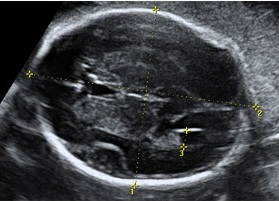Prenatal Invasive Testing at a Tertiary Referral Center in India: A Report of 433 Cases Under a Single Operator.
The Journal of Obstetrics and Gynecology of India – Jan 2022
Speaker – Dr. Vandana Bansal
Moderator – Dr. Anita Kaul
The study looked at indications for invasive testing, positive predictive value according to the indication,incidence of second prick, culture failure, or miscarriage within 4 weeks of the procedure.
- Maximum number of procedures were due to being screen positive for chromosomal problems. According to the study the overall positive predictive value (PPV) of a screen positive test for chromosomal aneuploidies was 6.7%. The PPV was very low (2.7%) for isolated biochemistry screen positive. Dr. Anita Kaul highlighted that this could be due to patients being referred for invasive testing based on serum biochemistry reports from different labs many of whom might not be adhering to strict FMF protocols for testing and auditing. Therefore, the need to do biochemistry from standardized labs and use only combined risk results rather than isolated biochemistry results for counselling was emphasized.
- The study had no procedure related losses. However; it was astutely pointed by Dr. Anita Kaul that this could reflect the author’s personal expertise given her extensive experience and might not apply to all. Also Dr. Anita Kaul recommended that pre term deliveries post procedure could have been included in the outcomes analyzed.
Preserved Blood Spots Aid Antenatal Diagnosis of Citrullinemia Type-1
Journal of fetal medicine – June 2021
Speaker – Dr. Shruti Bajaj
Moderator – Dr. Divya Agarwal
The case report highlighted the importance of DNA storage in case of history of neonatal death with suspected inborn error of metabolism.
- Isolated biochemistry-based diagnosis of IEM is not enough to aid couples in reproductive genetic counseling. This has to be coupled with a genomic diagnosis.
- Dried blood spots can be a source of DNA when appropriately stored for many years.
- DNA banking will go a long way in aiding diagnosis even if index case is no longer available. Therefore obstetricians and neonatologists need to be made aware about DNA banking methods.
Especially in fetuses that are being terminated for malformations and neonatal deaths where cause has not yet been firmly established.
Disclaimer:
The papers presented in the research webinars strictly reflect the author’s opinions and practices. FMFI is a neutral platform for scientific discussions and does not endorse or refute these opinions.







